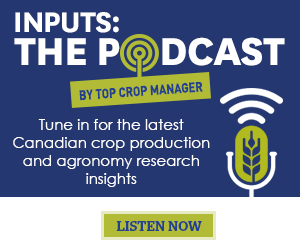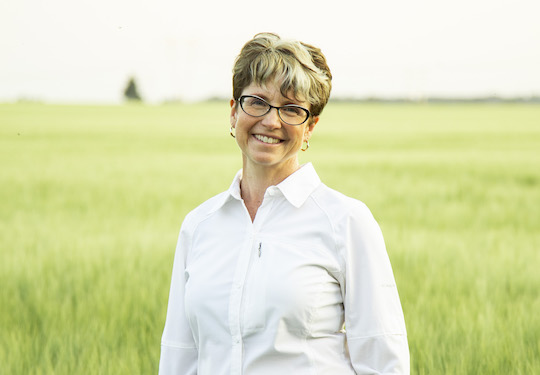| |
| |
 |
 |
| |
 |
|
@{mv_date_MMM d, yyyy}@ |
|
| |
 The time has come to start putting up sticky traps for corn rootworm adults, according to OMAFRA field crop entomologist Tracey Baute.
» Read More...
The time has come to start putting up sticky traps for corn rootworm adults, according to OMAFRA field crop entomologist Tracey Baute.
» Read More...
These on-farm collaborative projects bring together producers and scientists, who co-develop and test innovative practices and technologies to accelerate the agri-environmental shift.
» Read More...
The Canola Council of Canada has announced Chris Davison will be its next president and CEO. Davison joined the CCC in August 2021 as vice-president, stakeholder and industry relations.
» Read More...
|
| |
|
| |

In this episode of Inputs, Cheyne Ogilvie, an agrologist who recently completed her graduate studies at the University of Saskatchewan, spoke about her research on EENFs. She discusses what EENFs are and how the different varieties function, 4R nutrient management and her graduate research on whether EENFs could reduce nitrous oxide emissions – specifically, in irrigated spring wheat in central Saskatchewan.
Never miss an episode of Inputs by subscribing to the podcast on Apple Podcasts, Google Podcasts, Spotify, or wherever you listen to podcasts.
» Listen now... |
| |
|
| |
 Planting forages in marginal areas damaged by compaction, erosion or salinity issues have a range of benefits. This time, farmers could get paid for the practice through Ducks Unlimited Canada’s Marginal Areas Program. Producers who sign on are paid $150 per acre in exchange for a commitment to leave those areas in forages for ten years.
» Read more...
Planting forages in marginal areas damaged by compaction, erosion or salinity issues have a range of benefits. This time, farmers could get paid for the practice through Ducks Unlimited Canada’s Marginal Areas Program. Producers who sign on are paid $150 per acre in exchange for a commitment to leave those areas in forages for ten years.
» Read more... |
| |
 Western Canadian crop rotations are often simple with a dominance of canola and wheat. While many studies show the benefits of diverse crop rotations, these are not always implemented on-farm due to economic drivers and logistics. Sheri Strydhorst explores yield performance trends of different crop rotations and look at ways to diversify rotations while acknowledging the constraints that farmers face.
» Read more...
Western Canadian crop rotations are often simple with a dominance of canola and wheat. While many studies show the benefits of diverse crop rotations, these are not always implemented on-farm due to economic drivers and logistics. Sheri Strydhorst explores yield performance trends of different crop rotations and look at ways to diversify rotations while acknowledging the constraints that farmers face.
» Read more... |
| |
| |
|
| |

|
| |
| |







